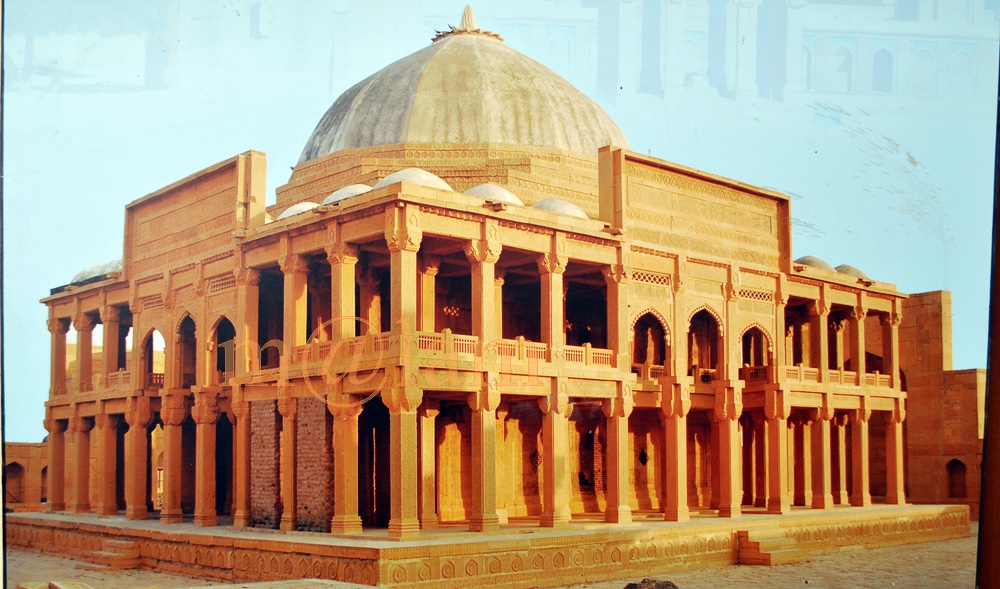Overview
The gigantic Muslim necropolis of the historical monuments, Makli Necropolis in Thatta, is one of the largest graveyards in the world. The cemetery encompasses an area of 10 km2 and is home to about half a million monuments. Sprawling in a diamond-shaped site, Makli houses alluring tombs and graves of people from all walks of life; notably of kings & queens, scholars & soldiers, philosophers, governors, and saints. It was included in the world heritage sites in 1981.
History:
According to historical accounts, the sleeping city of Makli is the final resting place of over 125,000 saints. The city has historically been an important centre of learning. According to an estimate, there were some 400 educational institutions where students from the Muslim world and Asia learned different disciplines including religion, politics, and philosophy.
However, the fable that who first inhabited this city has remained unresolved. It is generally believed that the cemetery grew around the shrine of the fourteenth century Sufi Hamad Jamali. Likewise, why this place was called Makli is another legend. Two notions hold – the first that locals believe Makli means Mecca-like and the other is the association of the name with the pious women “Mai Makli” whose prayers said to have averted Sultan Firuz Shah Tughlaq’s conquest of Thatta until she died. She was also buried in Makli near the tomb of Jam Nizamuddin.
Thatta remained a glorious capital of Sindh from 14th to 18th centuries reigned by three successive dynasties – Samma, Argun and Tarkhan – before it was ruled by the Mughal emperors of Delhi from 1592 to 1739. The province was then ceded to the Shah Nadir of Iran in 1739 when Thatta entered into a period of depravity and neglect.
There are monuments notable for their design, size, and artwork. The tombs of Jam Nizamuddin II, who ruled from 1461 to 1509, is an impressive structure square in shape built of sandstone and adorned with floral and geometric medallions. Likewise, the two-story mausoleums of Isa Khan Tarkhan the Younger and also of his father, Jan Baba, was constructed before 1644 – a stone building with majestic cupolas and balconies. The most colourful is that of Diwan Shurfa Khan (died in 1638). All the tombs are different in size, shape, and design. Some of the monuments are built a double-story with covered premises indicating the trademark of the buried inside.
Impressed by the extent and prominence of Makli Necropolis, Dr. Anne Marie Schimmel, the distinguished German Sufi scholar and an authority on Iqbal’s poetry once wished to be buried here. Makli, the city of silence, is an archaeologists’ paradise. It is equally fascinating for domestic and international tourists as well as for pilgrims. Makli, however, became an unsolved legend today in many aspects.
Architecture:
The historical monuments at Makli mark the social and political history of the Sindh province between the 14th and 18th centuries. Most tombs and graves of the upper echelon during the glorious period of Thatta were built with architectural dexterity, displaying a unique art of the time, using a variety of materials including sand bricks, stone, and marble. Some of the monuments at Makli are lavishly decorated with glazed tiles. These monuments feature various designs with arched domes and towers inscribed beautifully of Islamic calligraphy and devotional carving representing motifs drawn from various religious and iconographic traditions.
Most of the monuments of the iconic figures are still standing in good condition today, even after several centuries of exposing to all weather conditions, representing Hindu and Islamic architecture. A considerable renovation, however, is required to pass on the rich heritage to the next generations.
Location and access:
The site making the historical monuments at Makli lies adjacent to the tip of Indus river delta, on the outskirts of Thatta – the ancient centre of Islamic civilization – clustered at the edge of 6.5 km long plateau of Makli. It is about 89kms east of Karachi in the Sindh province, south of Pakistan. Makli Hill is an ideal day trip from Karachi. The entire site of the graveyard is easy to navigate through wide streets giving access to all monuments.


Comment (0)